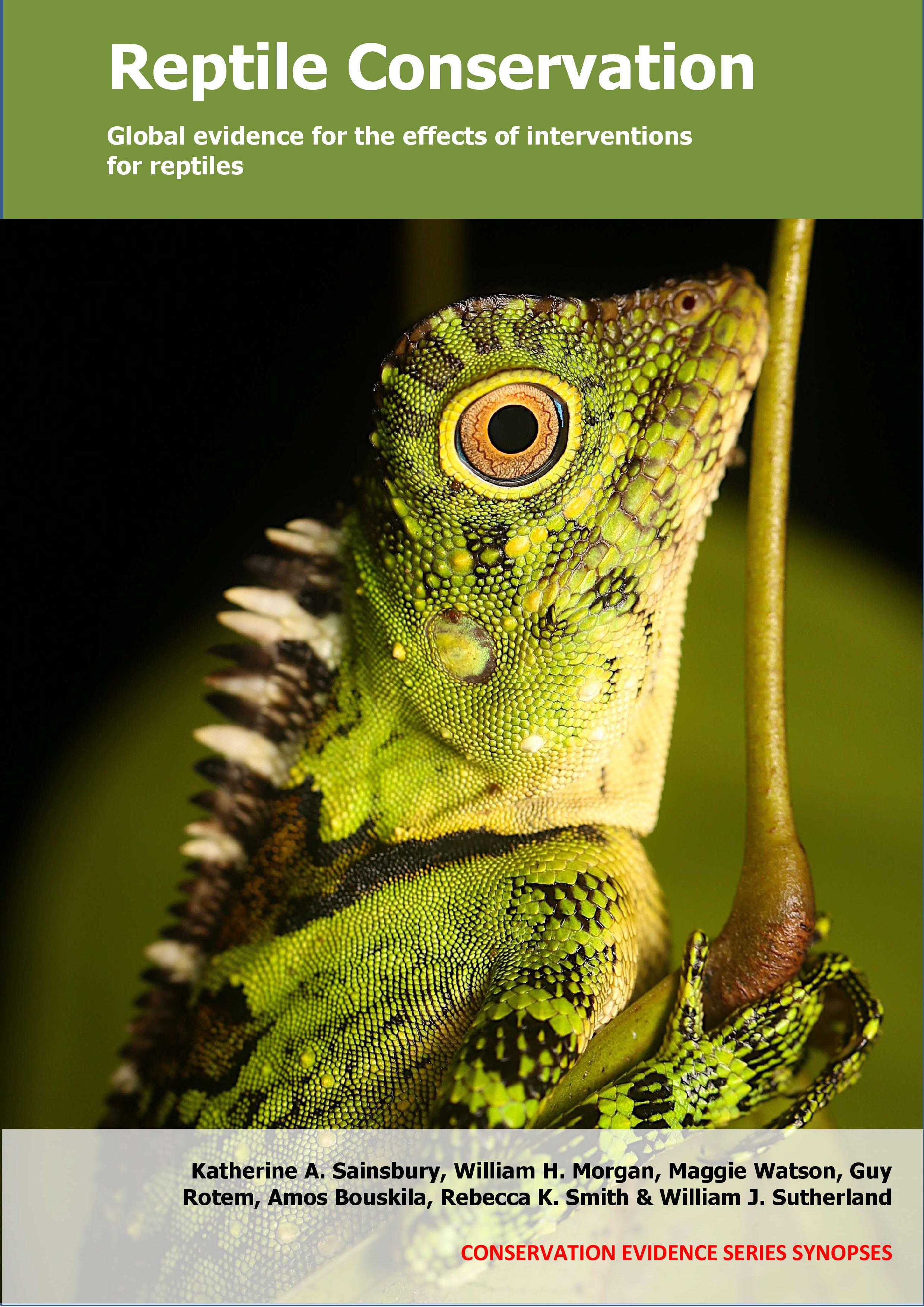Actions to conserve biodiversity
We have summarised evidence from the scientific literature about the effects of actions to conserve wildlife and ecosystems.
Review the evidence from the studies
Not sure what Actions are? Read a brief description.
Search for evidence
e.g. "frogs chytrid"
312 Actions found
Refine
Hide
312 Actions found
Download Actions
| 0 selected |
|
Order results by:
| Action | Effectiveness | Studies | Category | |
|---|---|---|---|---|
|
Protect nests and nesting sites from predation using artificial nest covers: Tuatara Action Link |
No evidence found (no assessment) | 0 |
|
|
|
Protect nests and nesting sites from predation by camouflaging nests Action Link |
Awaiting assessment | 2 |
|
|
|
Protect nests and nesting sites from predation using visual deterrents Action Link |
Awaiting assessment | 1 |
|
|
|
Protect nests and nesting sites from predation by creating new nesting sites Action Link |
Awaiting assessment | 1 |
|
|
|
Protect nests and nesting sites from predation using chemical deterrents Action Link |
Awaiting assessment | 4 |
|
|
|
Protect nests and nesting sites from predation using conditioned taste aversion Action Link |
Awaiting assessment | 1 |
|
|
|
Remove or control non-native reptile competitors Action Link |
No evidence found (no assessment) | 0 |
|
|
|
Remove or control non-native/invasive plants Action Link |
Awaiting assessment | 4 |
|
|
|
Remove or control invasive or problematic herbivores and seed eaters Action Link |
Awaiting assessment | 7 |
|
|
|
Remove or control toxic invasive amphibians (e.g. cane toads, Asian toads) Action Link |
No evidence found (no assessment) | 0 |
|
|
|
Use conditioned taste aversion to prevent carnivorous reptiles from eating toxic invasive cane toads Action Link |
Awaiting assessment | 2 |
|
|
|
Dispose of waste from pet reptile enclosures carefully to prevent spread of disease Action Link |
No evidence found (no assessment) | 0 |
|
|
|
Carry out surveillance of reptiles for early treatment/action to prevent spread of disease Action Link |
No evidence found (no assessment) | 0 |
|
|
|
Sterilize equipment to prevent spread of disease Action Link |
No evidence found (no assessment) | 0 |
|
|
|
Control ectoparasites in wild reptile populations Action Link |
Awaiting assessment | 1 |
|
|
|
Legally protect reptile species Action Link |
Awaiting assessment | 6 |
|
|
|
Translocate adult or juvenile reptiles: Sea turtles Action Link |
Awaiting assessment | 2 |
|
|
|
Develop/implement species recovery plans Action Link |
Awaiting assessment | 1 |
|
|
|
Translocate adult or juvenile reptiles: Tortoises, terrapins, side-necked & softshell turtles Action Link |
Awaiting assessment | 26 |
|
|
|
Plant native species Action Link |
Awaiting assessment | 2 |
|
|
|
Release animals that modify landscapes (e.g. ecological engineers) Action Link |
No evidence found (no assessment) | 0 |
|
|
|
Manage vegetation using livestock grazing Action Link |
Awaiting assessment | 2 |
|
|
|
Manage vegetation using herbicides Action Link |
Awaiting assessment | 7 |
|
|
|
Manage vegetation by cutting or mowing Action Link |
Awaiting assessment | 7 |
|
|
|
Manage vegetation by hand (selective weeding) Action Link |
Awaiting assessment | 4 |
|
Download Actions
| 0 selected |
|

Reptile Conservation - Published 2021
Reptile synopsis
Watch this search
If you are familiar with RSS feeds, please click the button below to retrieve the feed URL:
RSS feed for this searchIf you are unfamiliar with RSS feeds, we would suggest reading this BBC article.
Unfortunately, due to the number of feeds we have available, we cannot provide e-mail updates. However, you could use tools such as Feed My Inbox to do this for you.
What are 'Individual studies' and 'Actions'?
Individual studies
An individual study is a summary of a specific scientific study, usually taken from a scientific journal, but also from other resources such as reports. It tells you the background context, the action(s) taken and their consequences.
If you want more detail please look at the original reference.
Actions
Each action page focuses on a particular action you could take to benefit wildlife or ecosystems.
It contains brief (150-200 word) descriptions of relevant studies (context, action(s) taken and their consequences) and one or more key messages.
Key messages show the extent and main conclusions of the available evidence. Using links within key messages, you can look at the paragraphs describing each study to get more detail. Each paragraph allows you to assess the quality of the evidence and how relevant it is to your situation.
Where we found no evidence, we have been unable to assess whether or not an intervention is effective or has any harmful impacts.





)_2023.JPG)














